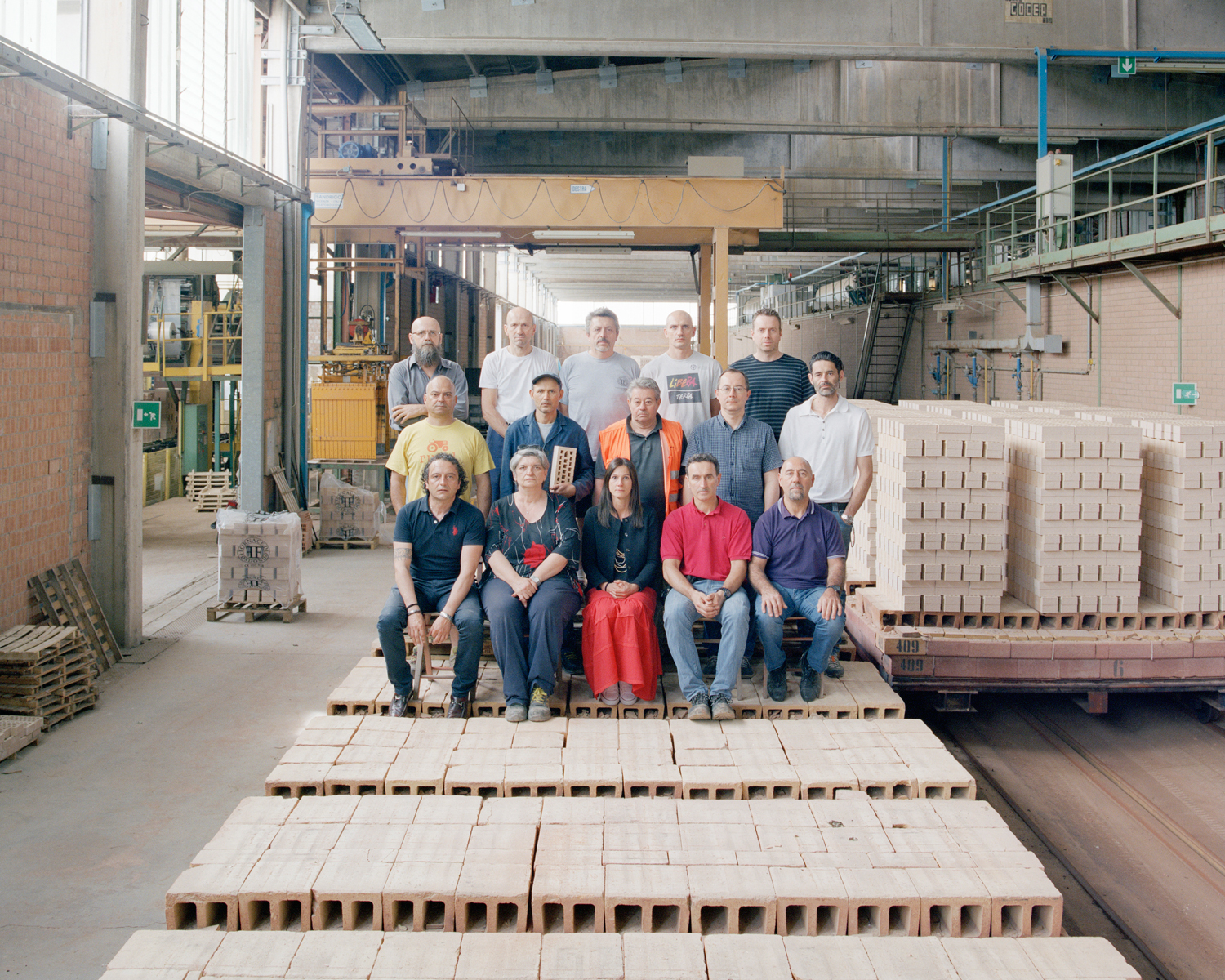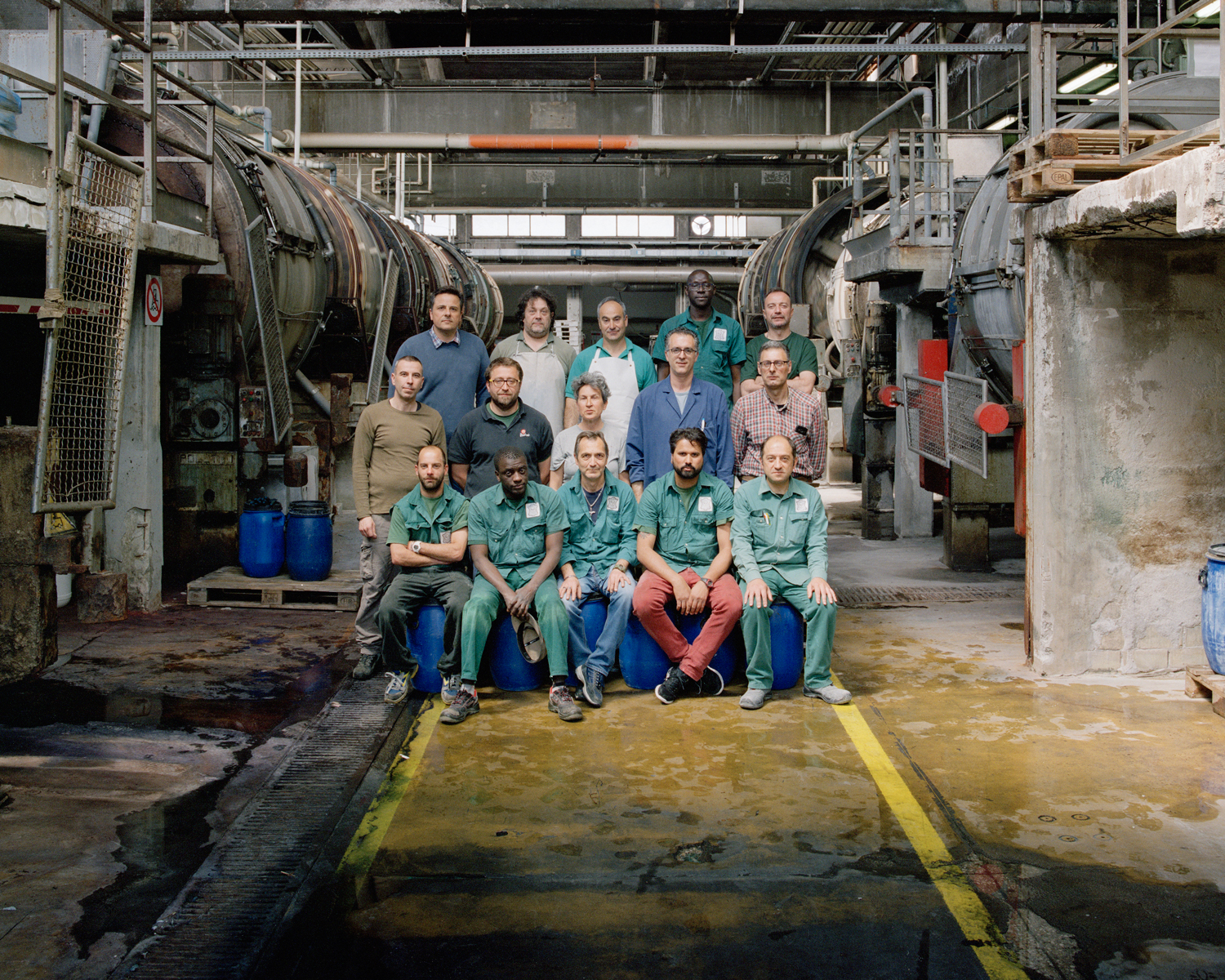Portfolio
Michele Borzoni
Quietly, after waiting hours outside, they file in one by one to an arena on the banks of the river Arno. The invigilators instruct them to sit in every other chair — no peeking at the answers of the other candidates. Of the 2,813 young people who have come to this giant stadium on the outskirts of Florence, just 12 will win the ultimate prize: a position as a kindergarten teacher. Welcome to one of Italy’s high-stakes concorsi, or civil service examinations, introduced in the 1960s to end clientelistic hiring, and now serving as bottlenecks to even the most menial of public sector positions. “Italy is a democratic republic, founded on work,” reads the first line of the national constitution. But when the meritocracy rots into a sweepstakes, “founded on unemployment” may be a more convincing formula.
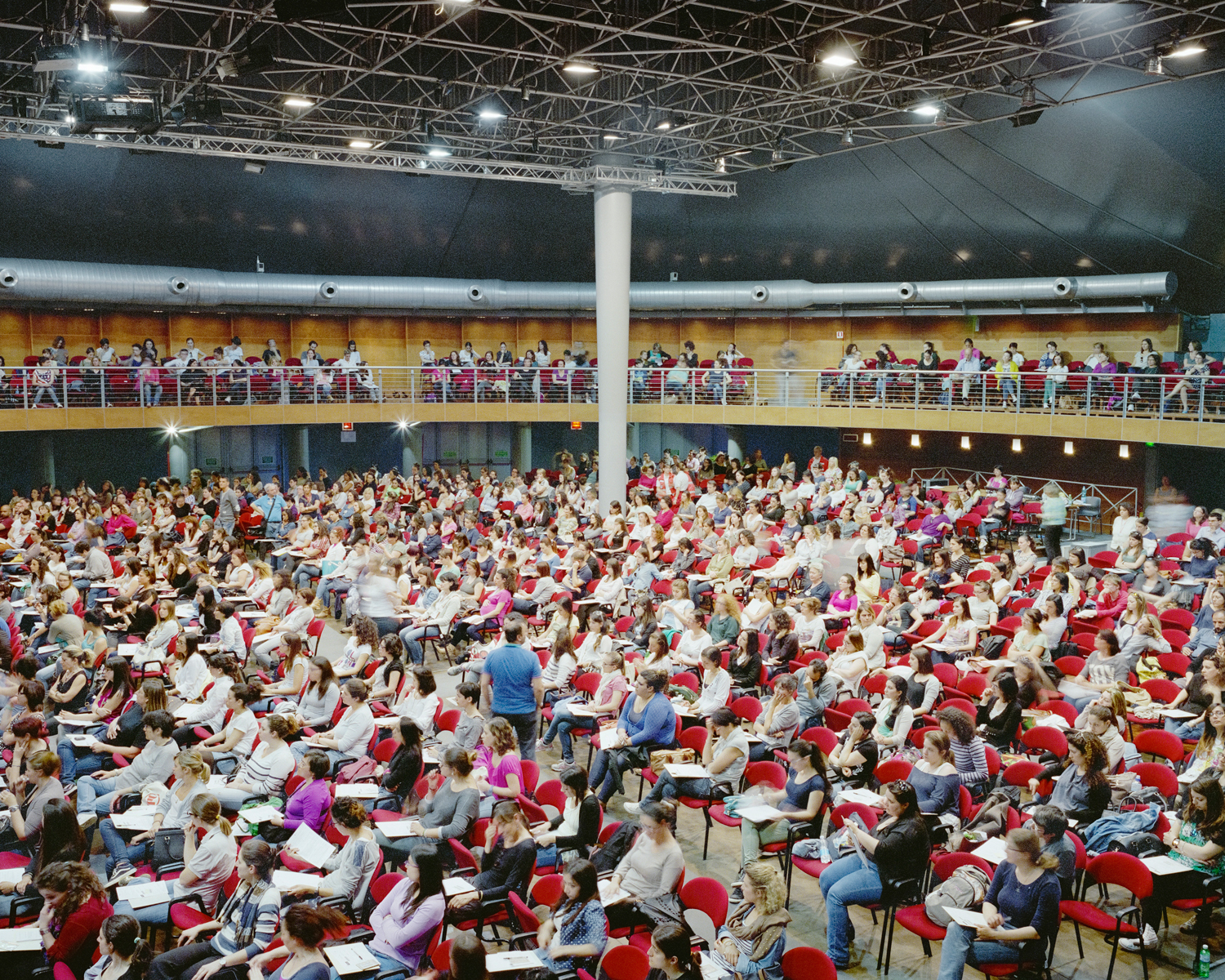
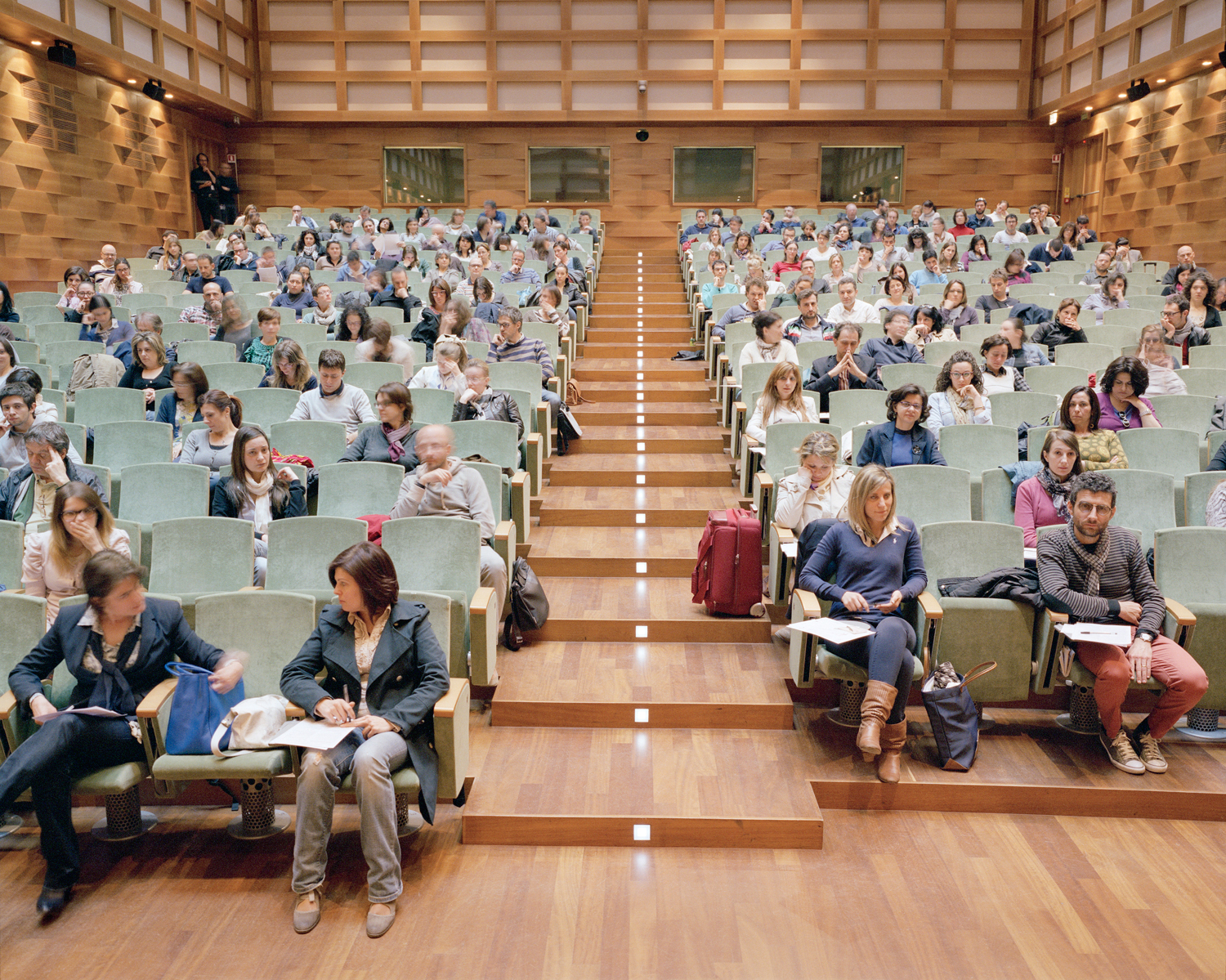
The Italian photographer Michele Borzoni has spent the last four years watching these bureaucratic examinations, where thousands of young people, facing a jobless rate of 35%, hope against hope for a posto fisso: a full-time position in the Italian civil service, as soldiers or nurses, museum curators or traffic cops. The oversubscribed exams take place in sport stadiums and concert halls, and getting approval to shoot — sometimes up close, sometimes from an anonymizing height — often poses as much a bureaucratic challenge as getting a job. The rigid, composed examination photos form one strand of Workforce, Borzoni’s extensive effort to give shape to the stultified Italian economy, its private businesses and public administration, its newfangled automation and arduous day labor. Those bright, underemployed postulants at the concorso can tell you that an economy’s worth takes account of its consumption, investment, public spending, and net exports. Workforce adds back what that equation omits: anxiety, resignation, old systems, new lives.
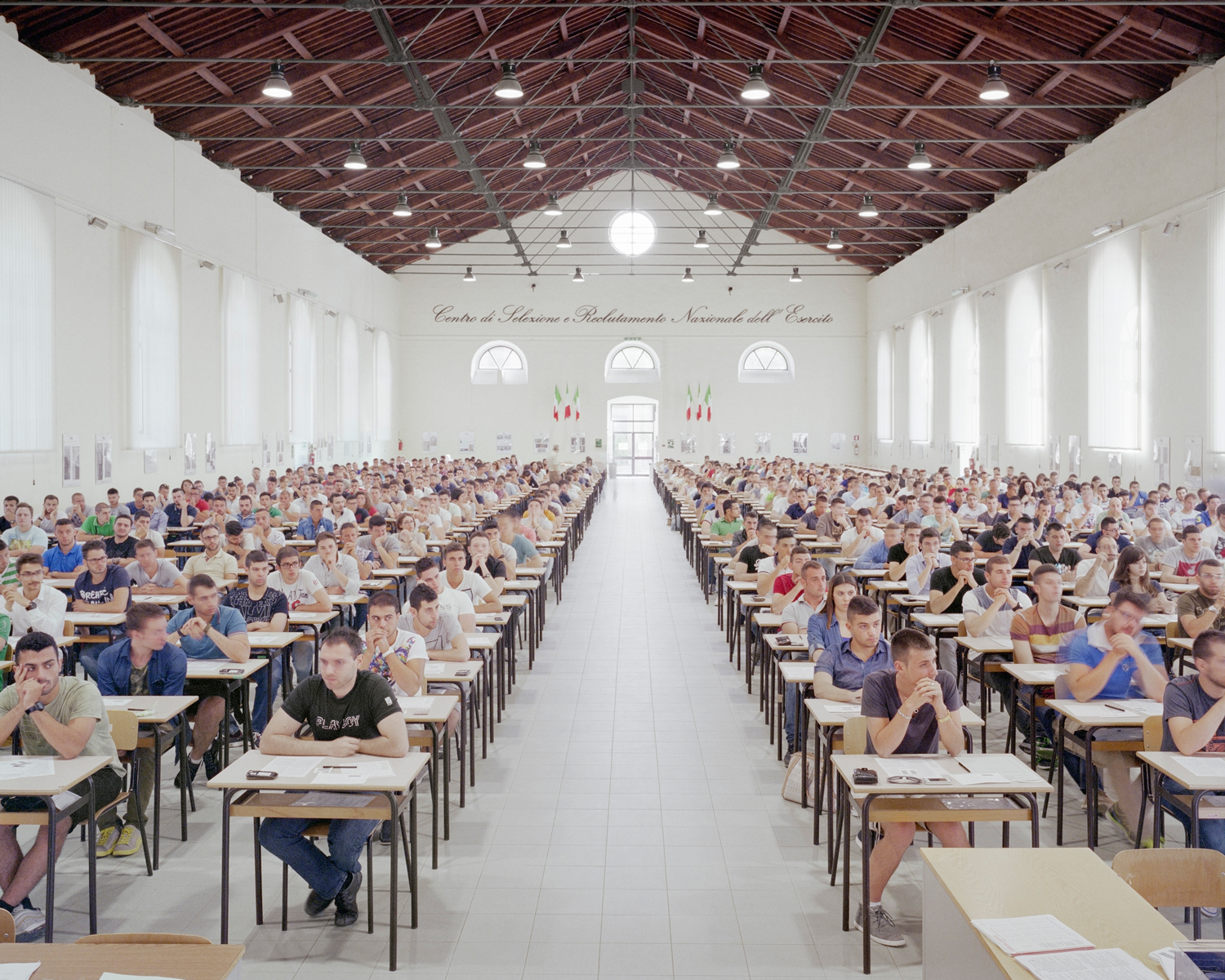
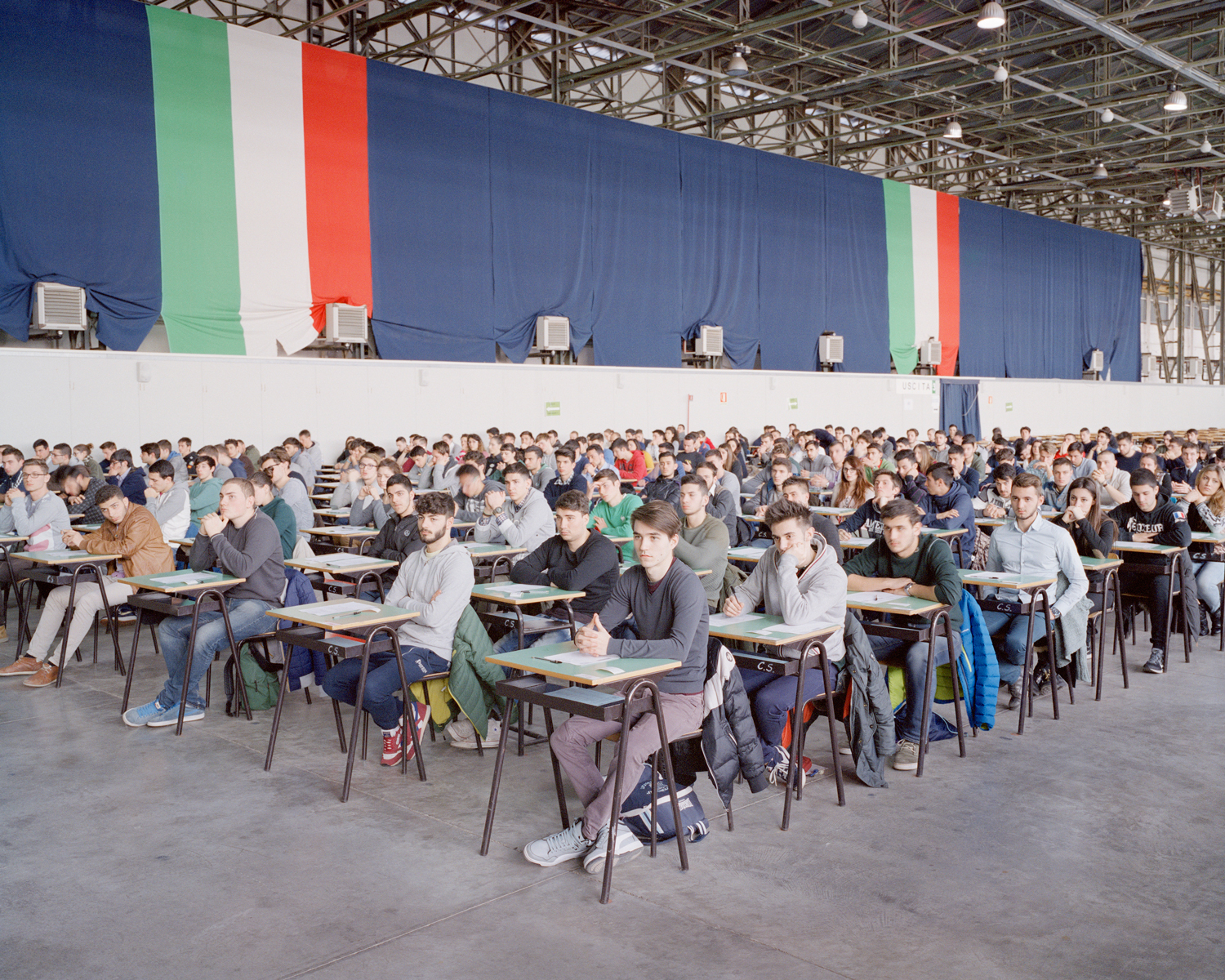
Borzoni was born in Florence in 1979. After studying in New York, he began shooting wide-ranging essays in regions riven by ethnic disputes, whether war-haunted Srebrenica or still roiling Kashmir. (His refined images of eastern Christians went on view this autumn at the Institut du Monde Arabe in Paris.) With Workforce, Borzoni turned his gaze back to Italy, mutating not just economically but demographically too. In the Florentine suburb of Prato, whose factories produce clothing designated “Made in Italy,” the labels fail to disclose that the master craftsmen are in fact Chinese immigrants. Down in Calabria, African refugees sleep in bright blue emergency shelters, before a long day in the fields. This winter’s Italian election has brought populists within striking distance of the Palazzo Chigi, and they have shamelessly demonized these men who have risked everything for work. But economics is not a morality play, and doesn’t bend to such wheezes; an economy is just the sum of everything we do.
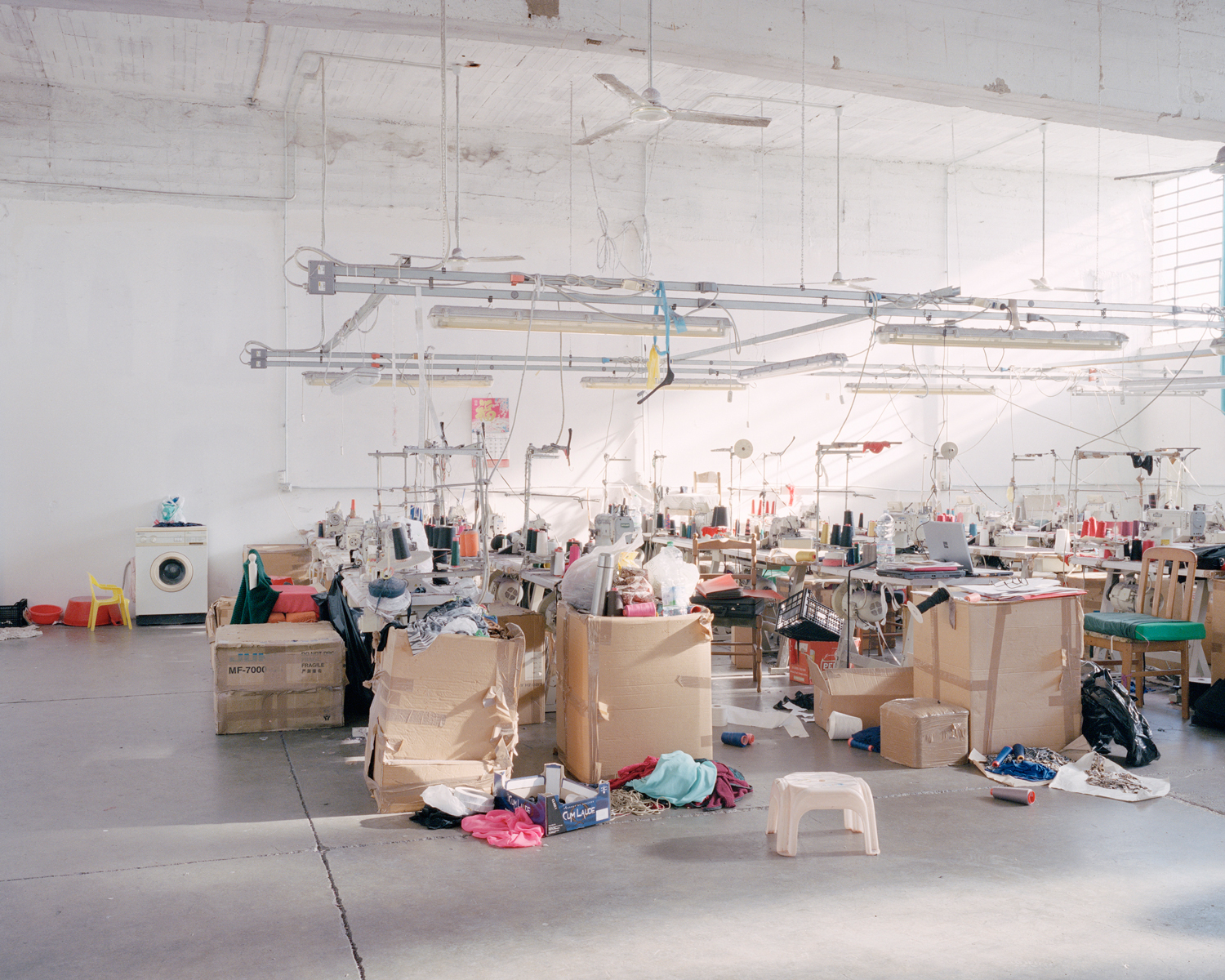
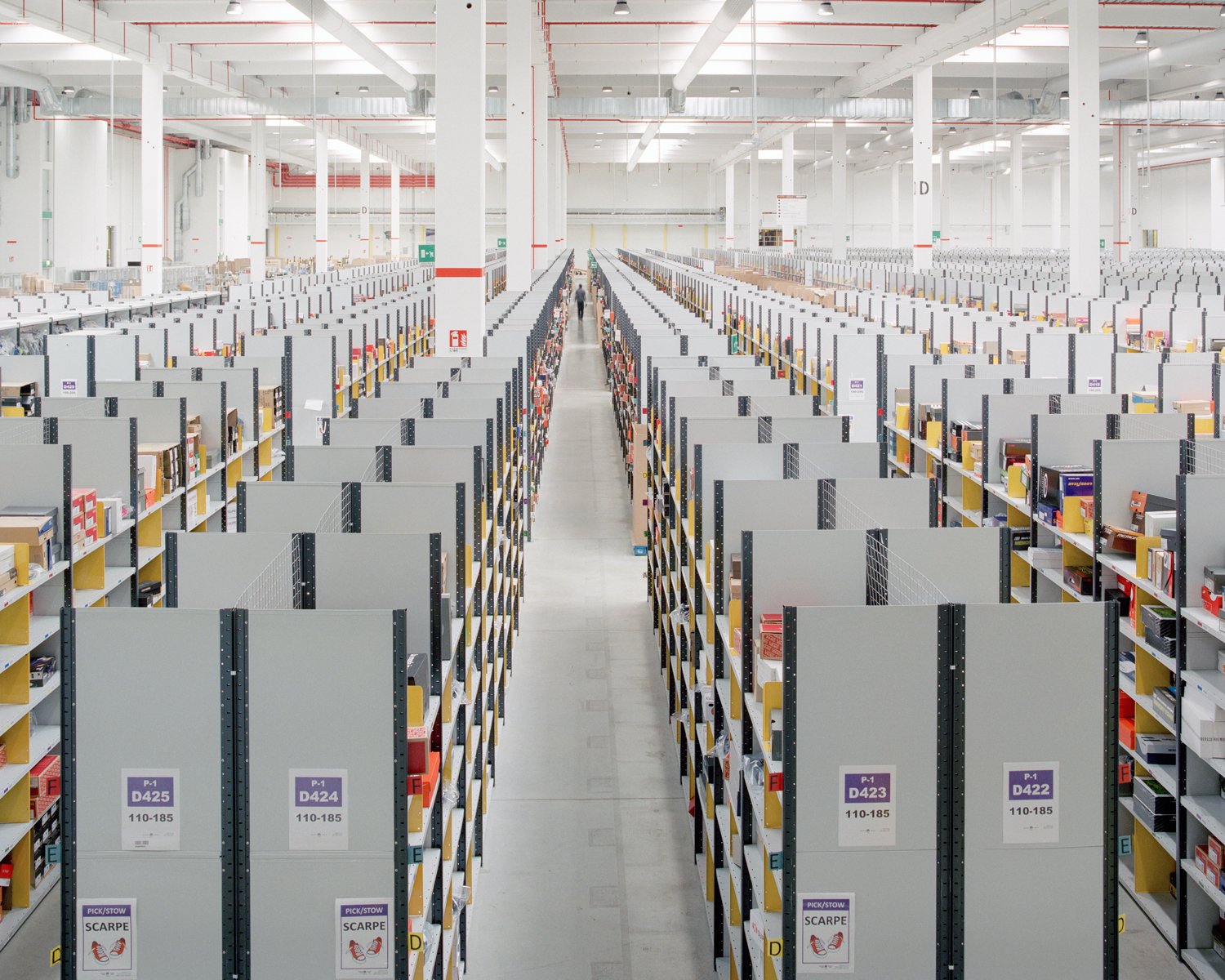
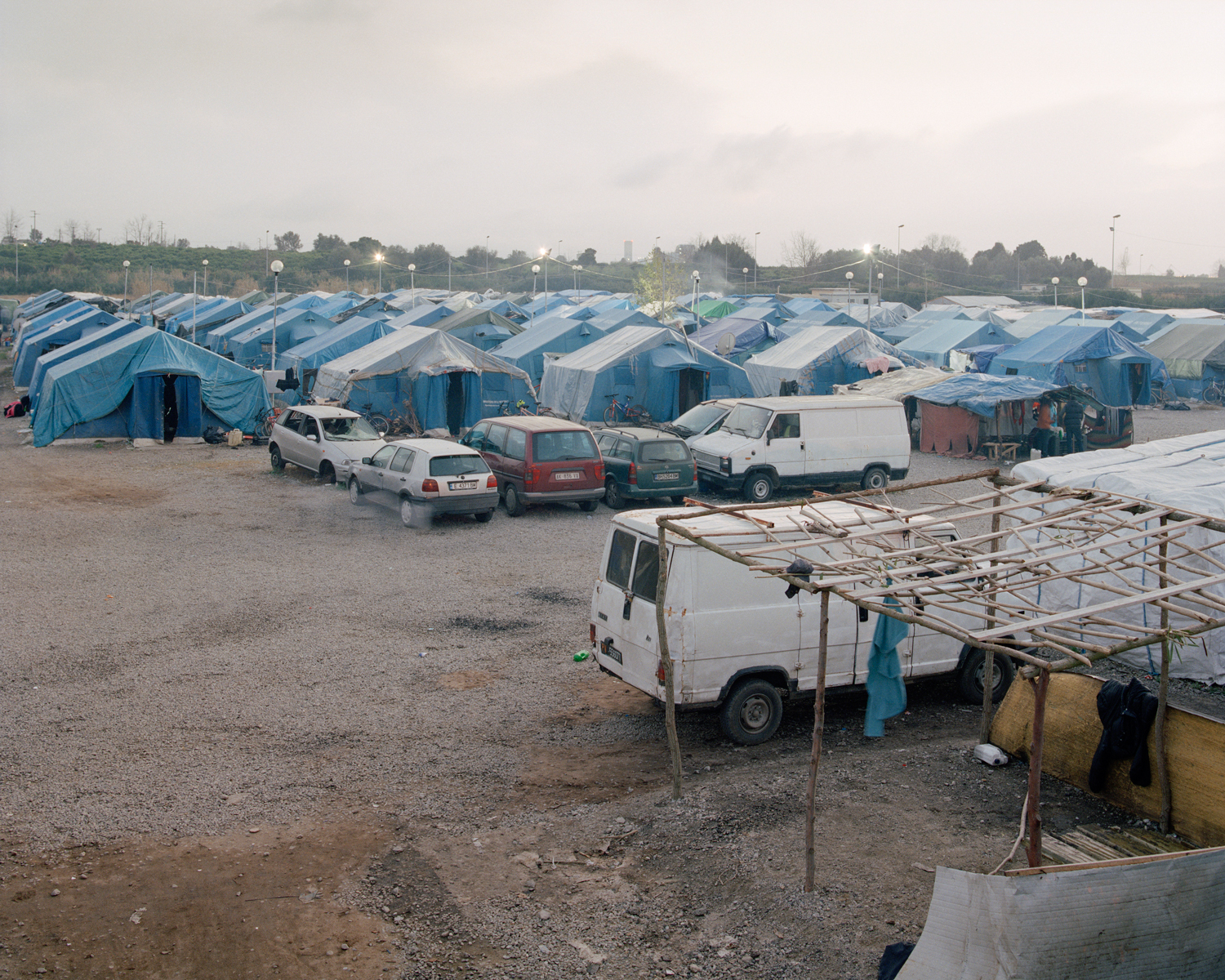
We see neither the Chinese seamstresses nor the African olive pickers in Borzoni’s photographs. At an Amazon dispensary in Piacenza, there is no sign of human life at all. But last year Borzoni drove up to Emilia-Romagna — once stagnant, now among the richest regions in Europe — where he photographed 15 brickmakers sitting with dignified formality atop freshly fired blocks of clay. They are laborers, but capitalists too: when the business nearly failed, they bought it themselves and restructured it as a cooperative. Sit the exam, be the lucky one among thousands, or else get together and take charge yourselves.
